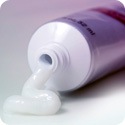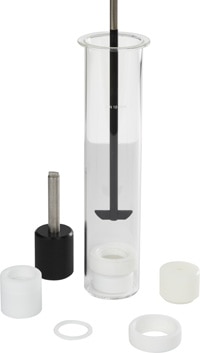Access Agilent eNewsletter July 2015
>> Update My Profile | Subscribe to Access Agilent | Article Directory

Easy dissolution testing of topical creams, ointments, and gels – with more consistent and reliable data
By Dan Spisak
Agilent Product Manager – Dissolution
Dissolution tests described by the United State Pharmacopeia (USP) ensure that semisolid drug products are of high quality, are reproducible from batch-to-batch, and provide dependable performance throughout their shelf lives. The apparatus for dissolution testing must deliver accurate and reproducible data and be easy to use. The Agilent Enhancer Cell is a cost-effective alternative that meets these needs.
Mandatory performance testing for semisolid drug products became official in the August 2013 First Supplement to USP 36 in USP general chapter <1724>. Similar to traditional pharmaceutical products such as tablets, product quality and performance tests for semisolid drug products are required to ensure their “identity, strength, quality, purity, comparability, and performance.”[1] This USP general chapter discusses three types of equipment:
- Vertical diffusion cell (sometimes known as the Franz Cell)
- Immersion cell (also known as the Enhancer Cell)
- Cell for USP Apparatus 4
You can use this equipment to evaluate the drug release from semisolid drug products such as creams, ointments, gels, and lotions. You commonly do tests during research and development, quality control, and for post-approval changes.

Figure 1. The Agilent Enhancer Cell Assembly is available in three sizes to vary the amount of exposed surface area.
Achieve more reproducible data
Each of the three cell types are viable solutions for quality and performance testing of semisolid dosage forms. However, the Immersion, or Enhancer Cell, offers a distinct advantage over the others and has been shown to deliver more consistent and reliable data [2, 3, 4]. The Agilent Enhancer Cell Assembly (Figure 1) consists of a polytetrafluoroethylene (PTFE) cell with adjustable volume and a screw cap to retain the skin or artificial membrane. You must control the available surface area because it is critical to achieving reproducible results. Control is accomplished by use of a “washer” with a defined opening of 4.0, 2.0, or 0.5 cm2.
The cell body is designed to be adjustable – to enable control of the volume of the reservoir within the cell body. The variable depth allows you to test semisolids, solutions, suspensions, or emulsions.
A membrane separates the dissolution media from the sample. The membrane should minimize the resistance to drug transport and should therefore be highly porous and of minimal thickness, and it should not bind with the active pharmaceutical ingredient (API). The proper membrane for your product should be chosen based on these characteristics.
ics. time and expense with this easy-to-use apparatusWhile data integrity is of utmost importance, the biggest advantage of the Agilent Enhancer Cell may be its ease of use. You can use the assembly with any dissolution apparatus configured for USP 2 (paddles); these are universal to most laboratories and thus save the expense of a dedicated instrument [5]. This familiar equipment shortens the learning curve and provides the ability to bring data online much faster [6]. In addition, you can use the Enhancer Cell in vessels that range from 200 mL up to conventional 1-liter volumes. Regardless of volume, the setup is easily automated for sampling and analysis with readily available systems.
Because the Agilent Enhancer Cell is made of PTFE, it is inert and will not interact with the formulations in the cell. You avoid the problem with breakage, which is common with most glass diffusion cells. Unlike the Franz Cell, the donor compartment of the Enhancer Cell that contains the formulation is temperature-controlled within the vessel.
View the Agilent Enhancer Cell tutorial video to see how easy it is to prepare, load, and test this device. For more information about the Agilent Enhancer Cell or any of Agilent’s dissolution products, bookmark our new Online Dissolution Source Book with embedded videos, application notes, and links. Then visit our website or contact us directly via the Dissolution Hotline.
References
- U.S. Pharmacopoeia 36 / NF 31, 1st Supplement, <1724> Semisolid Drug Products, 2012.
- P.P. Sanghvi, C.C. Collins, Drug Development Ind. Pharm. 19 (1993) 1573–1585.
- J.L. Zatz, H. Fares, Pharmaceutical Technology. 19 (1) (1995) 52–55.
- M. J. Lucero, Carbohydrate Polymers. 2013 Jan 30; 92(1): 149–56.
- P.R. Rege et al. J. Pharmaceutical and Biomedical Analysis. 17 (1998) 1225–1233.
- M. Rapedius, J. Blanchard. Pharmaceutical Research, vol. 18 (10), October 2001.
>> Update My Profile | Subscribe to Access Agilent | Article Directory